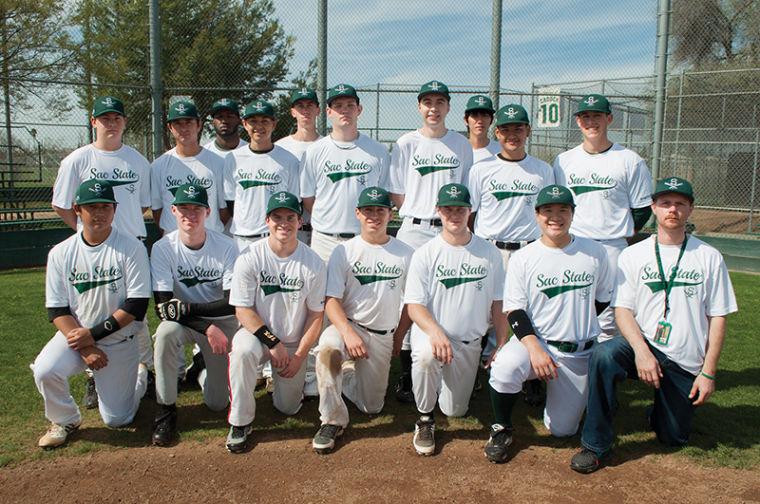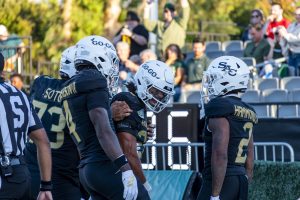Title IX impacts men’s athletics with unintended effects
April 8, 2016
Title IX of the Education Amendments Act of 1972 has helped provide an avenue for female college students to be more involved in NCAA-sanctioned sports.
Athletics was just one factor in a long list of changes the act created, but with sports being a financial juggernaut, it has been the most discussed both in a positive light and in a negative light.
Title IX stated in basic terms in regards to athletes that for every sport made available to males at a school that receives federal funding, there should be an equivalent sport made available for females. It also stated that funding should be proportionate to the enrollment rate of the institution, and scholarships should be near equal when adding them up altogether.
It has been proven that Title IX has helped to increase the amount of participation by female students in NCAA-sanctioned sports. However, Title IX has had one unintended side effect; fewer officially recognized sports for men.
This side effect is evident at Sacramento State and be easily seen just by looking at the NCAA-sanctioned sports on hornetsports.com. Sac State provides female students with 11 different NCAA-sanctioned sports. Male students are provided only eight. There are seven sports that have an equal counterpart for both genders. These include: baseball for males and softball for females, basketball, cross country, golf, soccer, tennis and track and field.
Football is the one unique sport offered for males at Sac State. Sac State’s football program provides the most scholarships of all sports provided at Sac State regardless of gender. Due to the discrepancy of scholarships between males and females because of football, females are offered four unique sports in beach volleyball, gymnastics, rowing and indoor volleyball. Those four sports help to equal out the funding and scholarships football gets with the funding these sports get.
Sac State offers 20 sport clubs that practice, travel and compete like the NCAA-sanctioned sports, but they are not recognized as official sports at Sac State. These sports clubs are where you will find many male-driven teams who want to be officially recognized as NCAA-sanctioned, but because of the amount of female sports these sports clubs will have to stay as that.
Sac State’s men’s rugby club is one team that has felt the effects of being a non-NCAA-sanctioned team. Nick Weeder, who plays fly half and is the team’s captain, said it is hard for the team to recruit players because they are a club sport and not an officially recognized team.
“It’s good that [Title IX] is trying to make everything equal, and that’s how it should be. However, the fact that it’s affecting my teams funds truly hurts not only for recruiting people at school, but getting kids from high school to want to come to Sac State to play for us. Sacramento is a hotspot for rugby, and the fact that we are still only a club means most of the great players Sacramento produces will not even consider Sac State,” Weeder said.
The lack of funding has always hurt, Weeder said, but what may lie ahead could hurt worse.
“The biggest problem we have to face funding-wise is travel,” Weeder said. “Right now we are in the playoffs and if a bracket happened to make us have a game in a different state I truly don’t know how we could afford that trip.”
Men’s rowing is one male sport club that has a female equivalent at Sac State, but will continue to be non-NCAA-sanctioned while the female counterpart is. Sac State’s men’s rowing sport club treasurer Taylor Grout said the difference in funding between the NCAA-sanctioned women’s rowing and the men’s rowing sport club is truly astonishing.
“My girlfriend is also on the team so she has told me about some of the actual numbers of [women’s rowing] funding. [Rowing], I believe, is the most expensive sport due to the specificity of the equipment required,” Grout said. “Eight-man shells, the most well known and admired boats, are at a minimum $40,000, not including the oars, which are $5,000 for a set of eight.”
Grout said the funding has limited the men’s rowing team from being level with other teams they compete with.
“Women’s rowing receive enough funding to circulate their boats yearly while also updating them,” Grout said. “We have been rowing with the same shells since the 80s and early 90s without any success of buying a new boat.”
Grout said he believes the women’s rowing team deserves the funding because they are a good team and win titles year in and year out. He also said with how hard men’s rowing practices and competes, they deserve to be officially recognized and funded by the NCAA.
Grout does see a benefit in the lack of funding felt by Title IX, though.
“I don’t think [lack of funding] is necessarily a bad thing because it limits the amount of scholarships causing individuals to strive to work that much harder to get a scholarship. It makes our athletes stronger and more well rounded in their school life, having to balance their school and athletic lives,” Grout said.
Sac State’s women’s rugby sport club president Kristina Johnson doesn’t feel Title IX has had a negative affect on men’s sports at Sac State.
“Team sports are more than just winning, they are about creating bonds with your teammates, teaching you leadership and respect, and doing what you love,” Johnson said.
Johnson said that she understands about the lack of funding the men’s rowing sport club feels.
“We have many girls who are unable to play because they must work in order to pay for their school, which could be changed if we were an NCAA sport with scholarships,” Johnson said. ” As a sport club we do not have access to the athletic training the sports do. Before sports clubs hired an athletic trainer for sports clubs only, many of the girls would have to go to The Well to get checked out or would leave injuries untreated which was quite dangerous.”
Title IX has had positive effects at Sac State by increasing the amount of females participating in NCAA-sanctioned sports. The sports that are recognized by the NCAA have done remarkably well, most notably women’s gymnastics.
For male sport clubs, the fight for funding and recognition continues, but they don’t have any ill will towards the female student-athletes.
“The fact that women are able to receive equal funding as men in sports across the spectrum [is a good thing]. It’s good to equalize athletes on their benefits,” Grout said.

























































































































